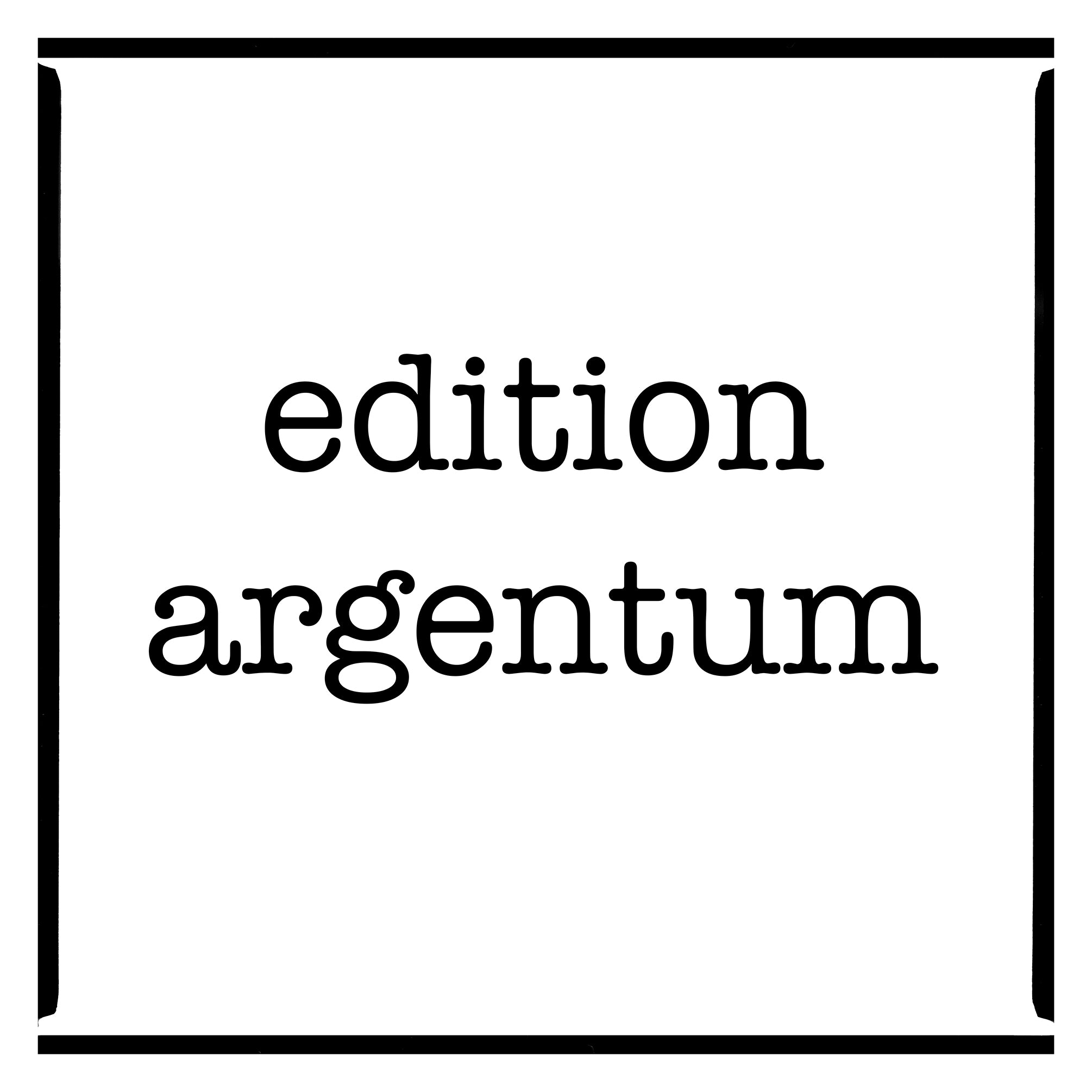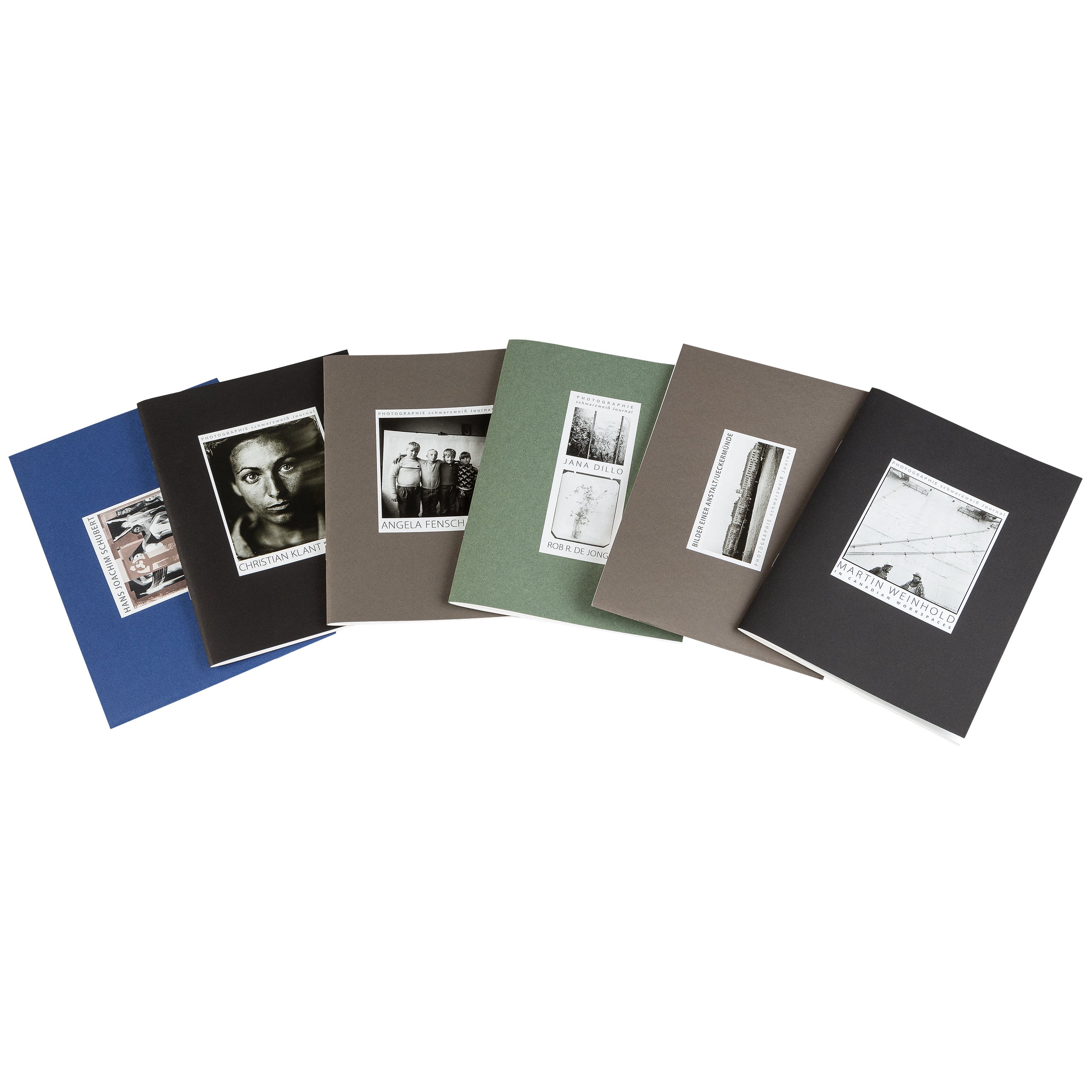
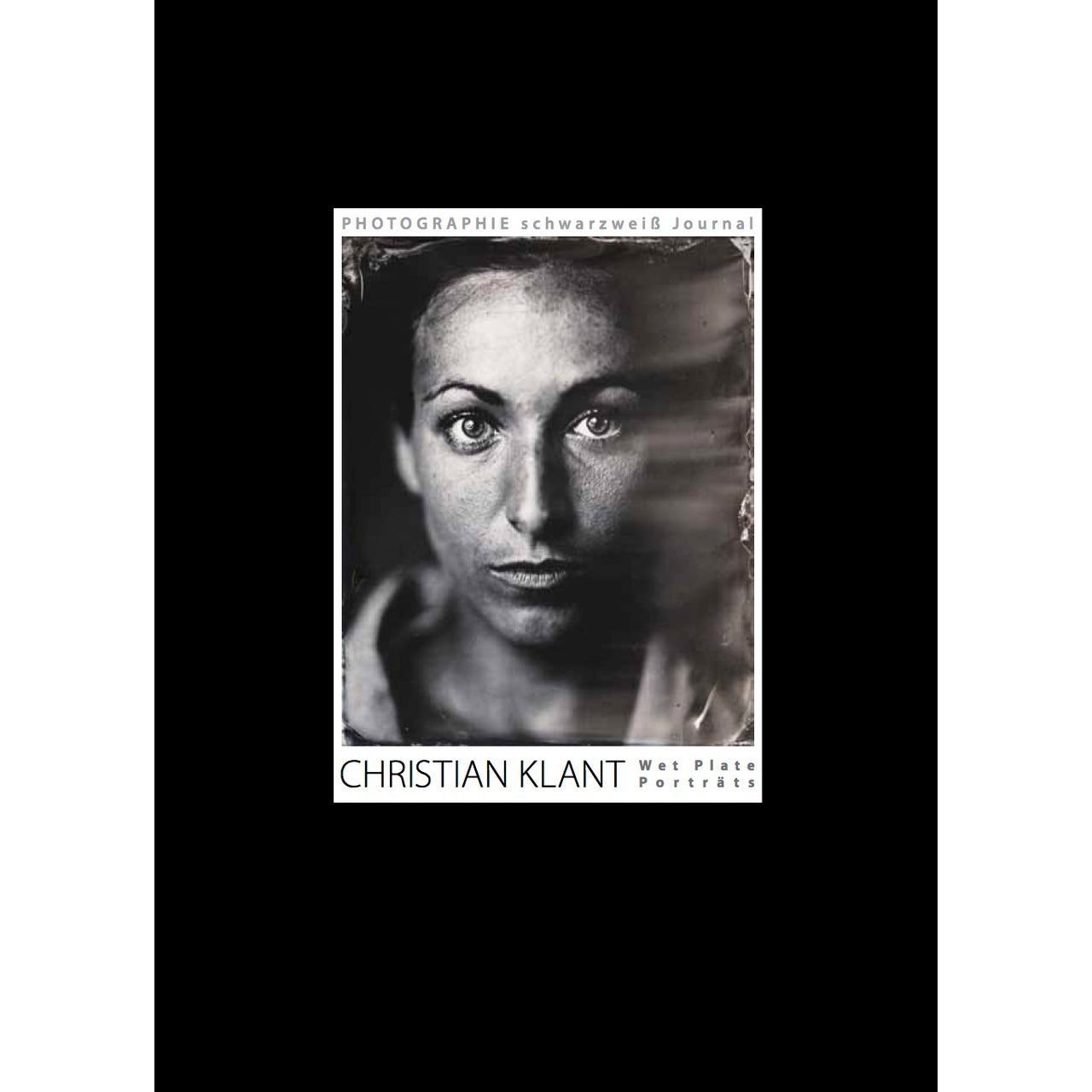
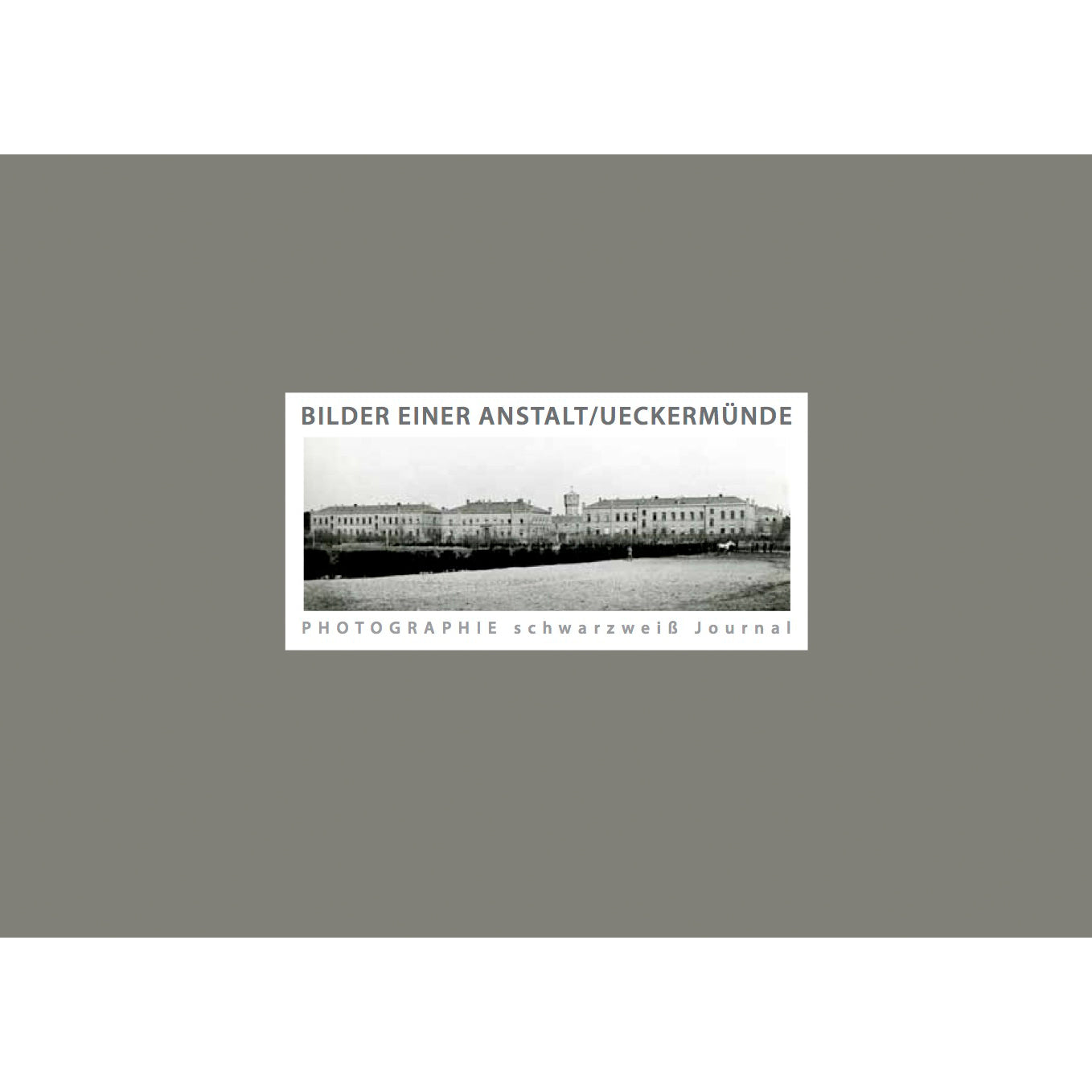
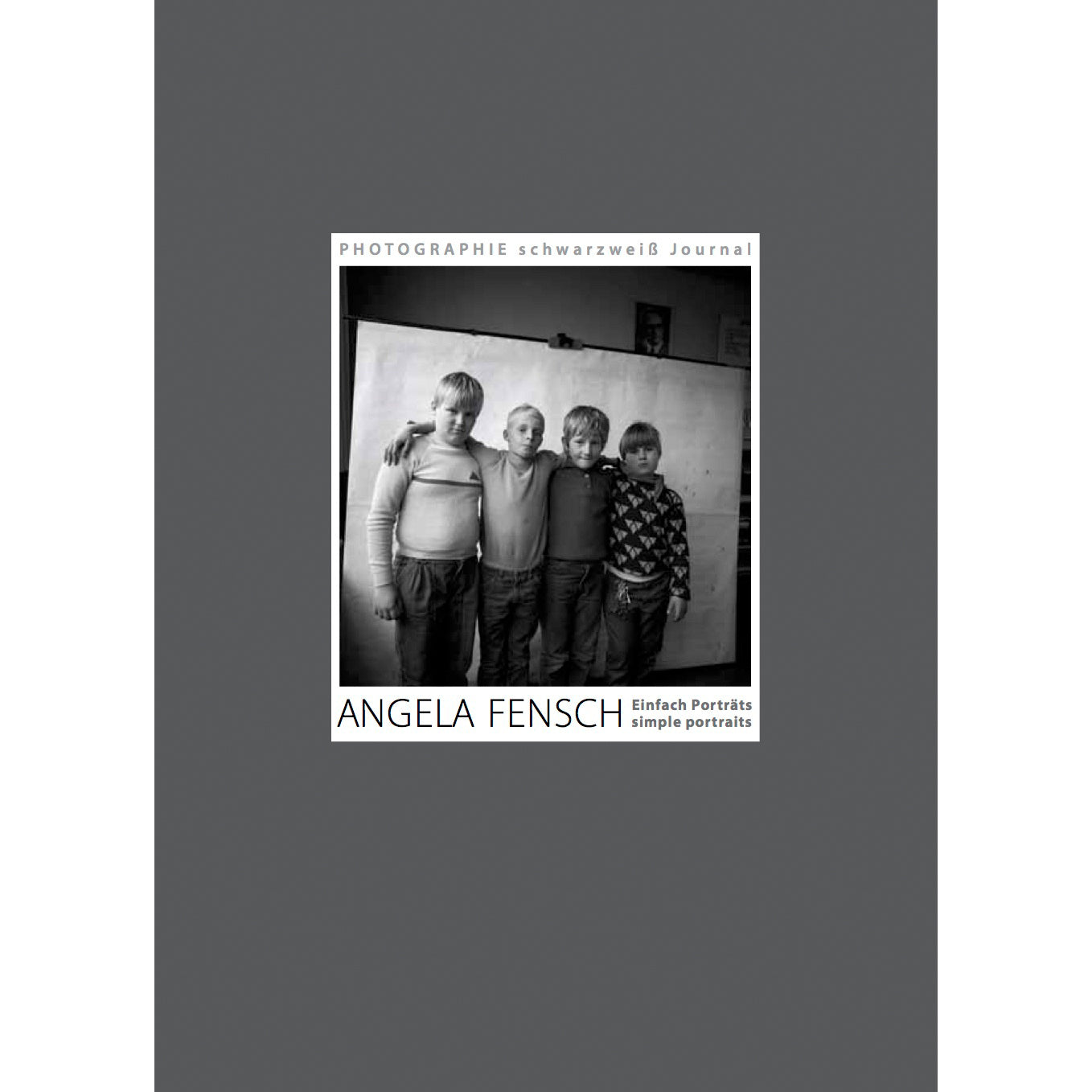
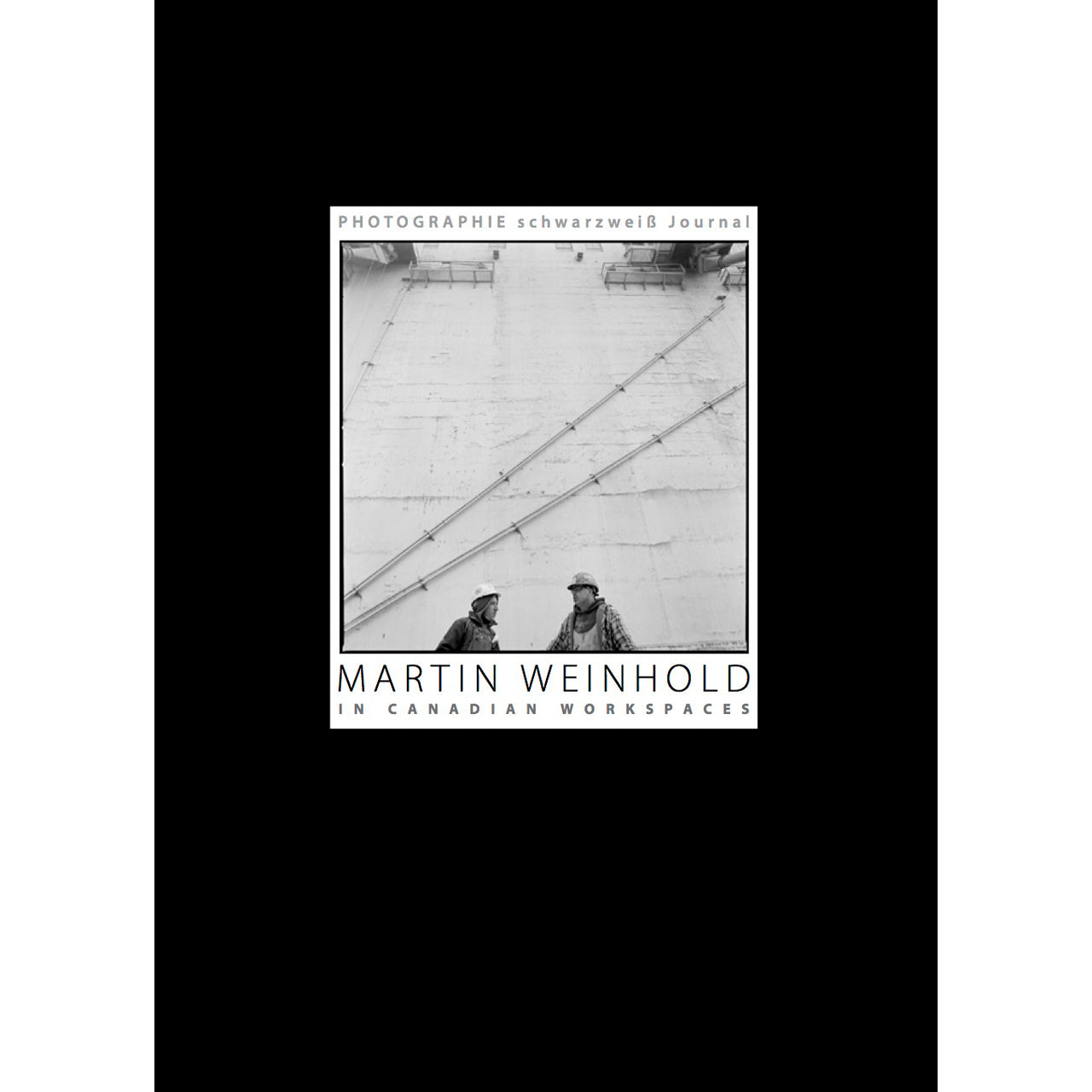
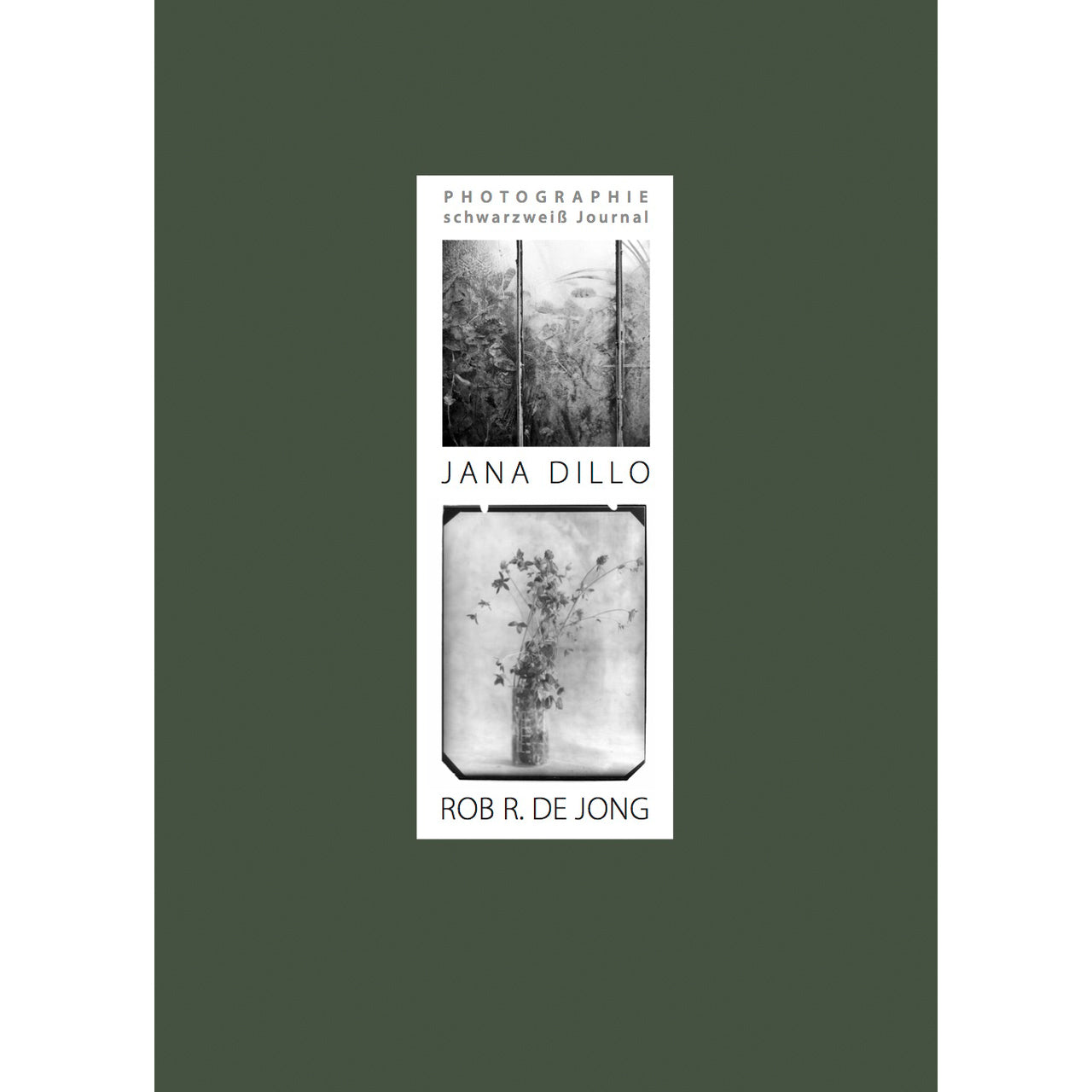
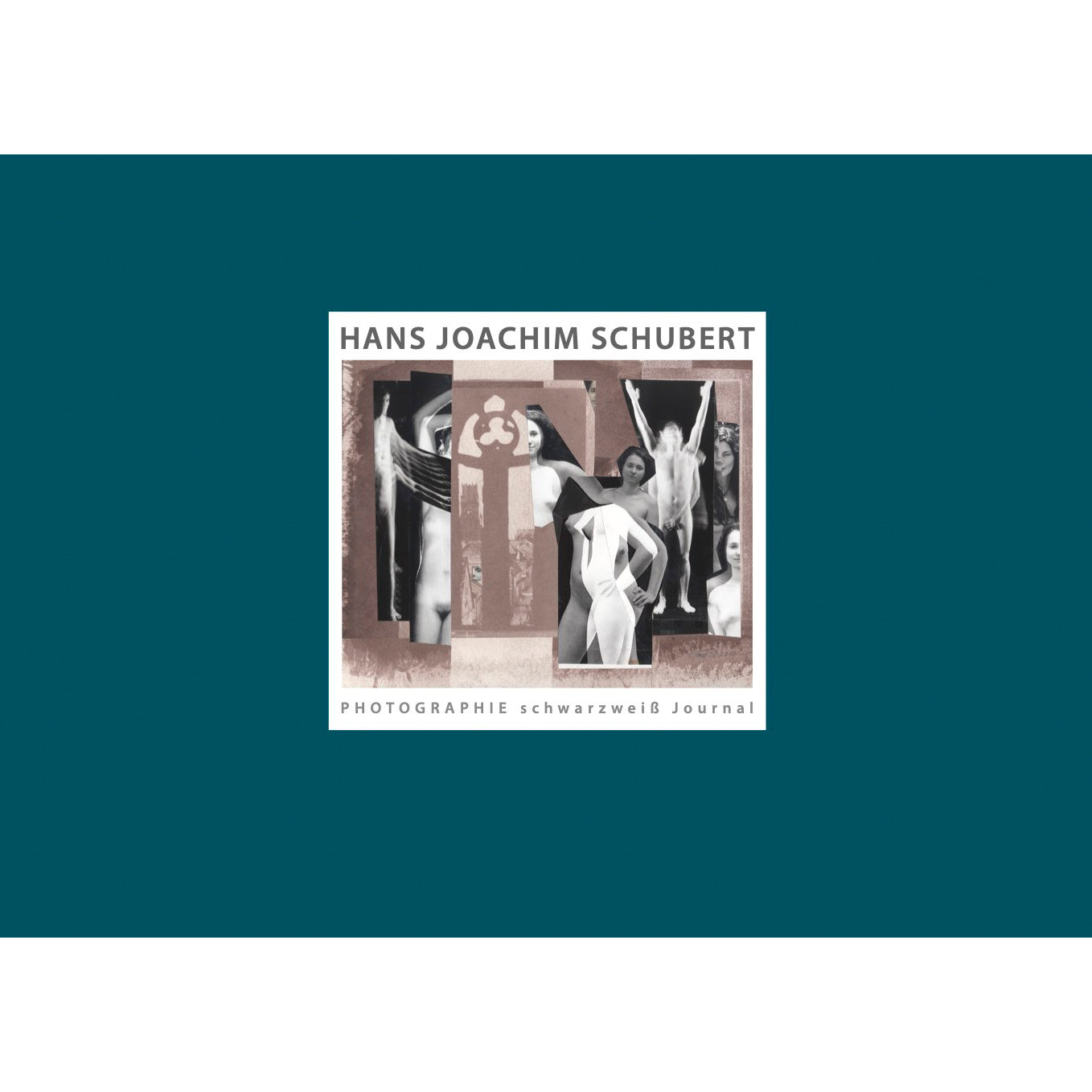
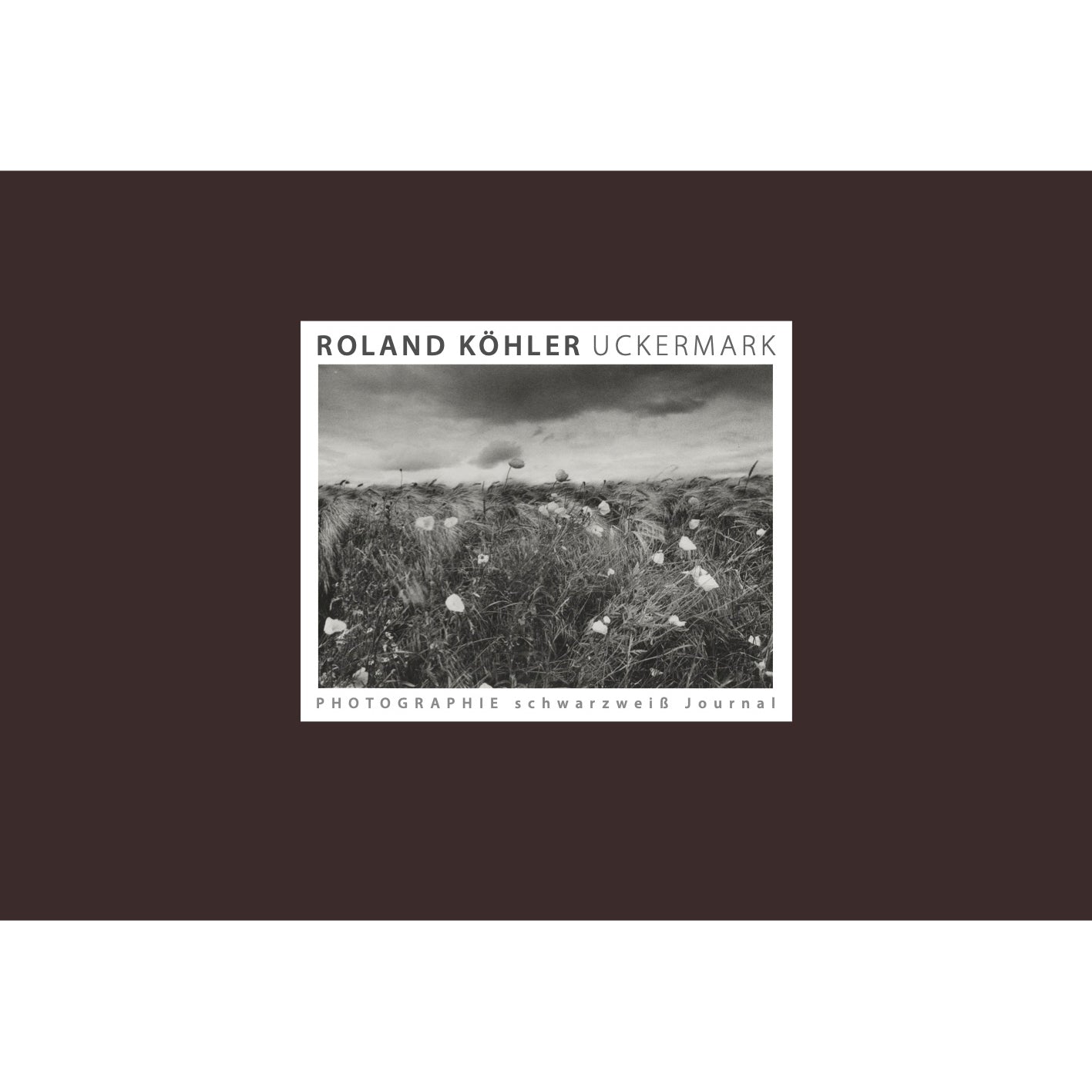
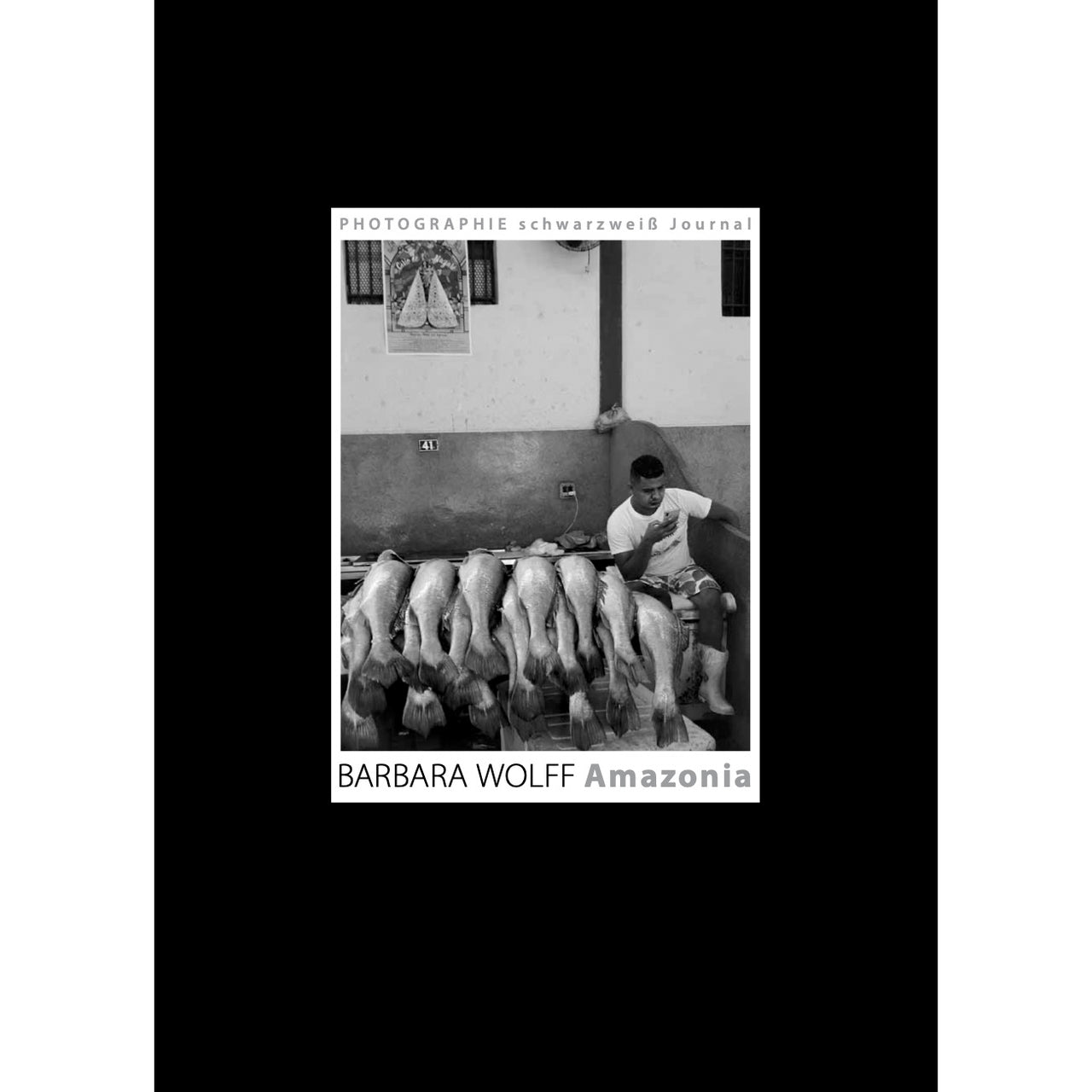
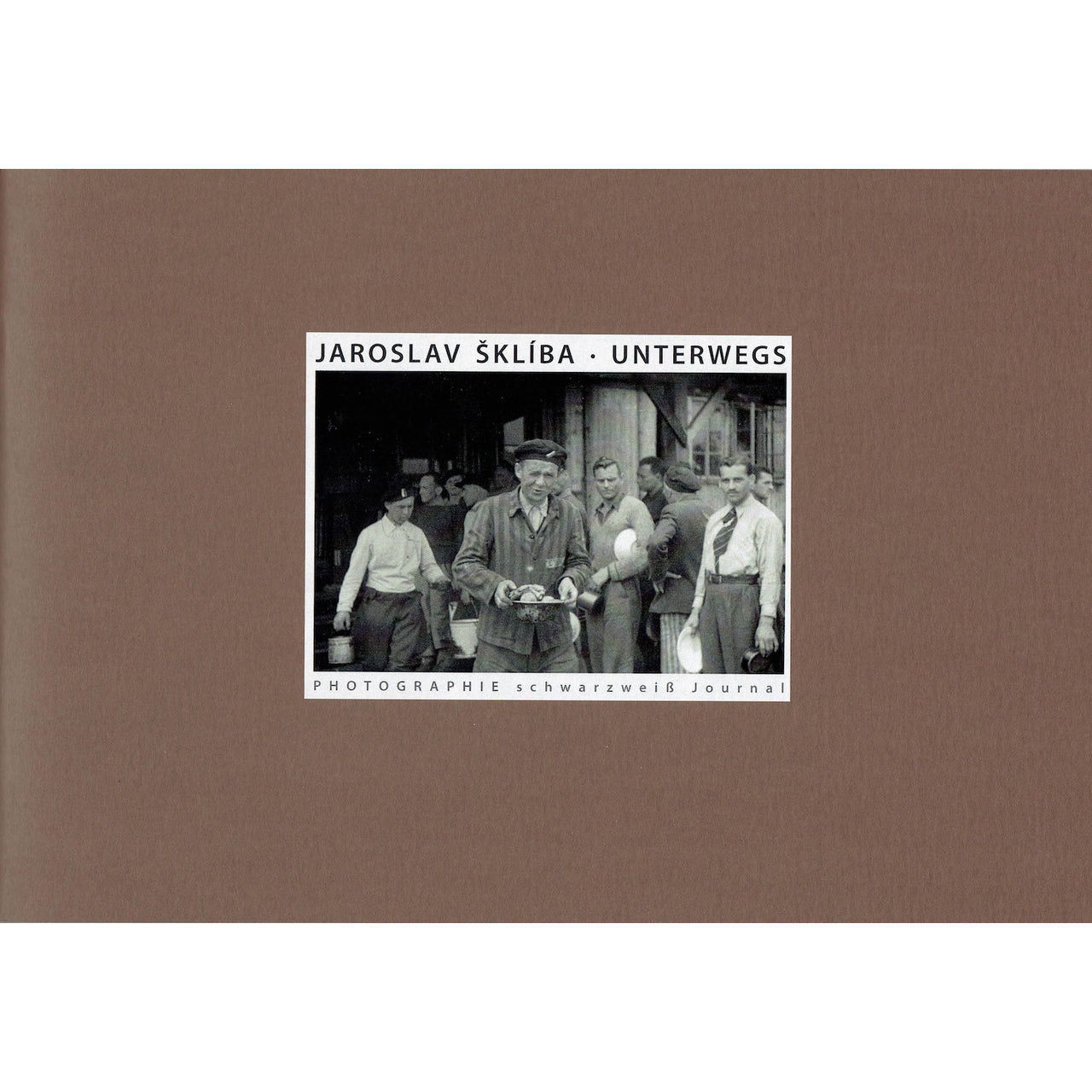
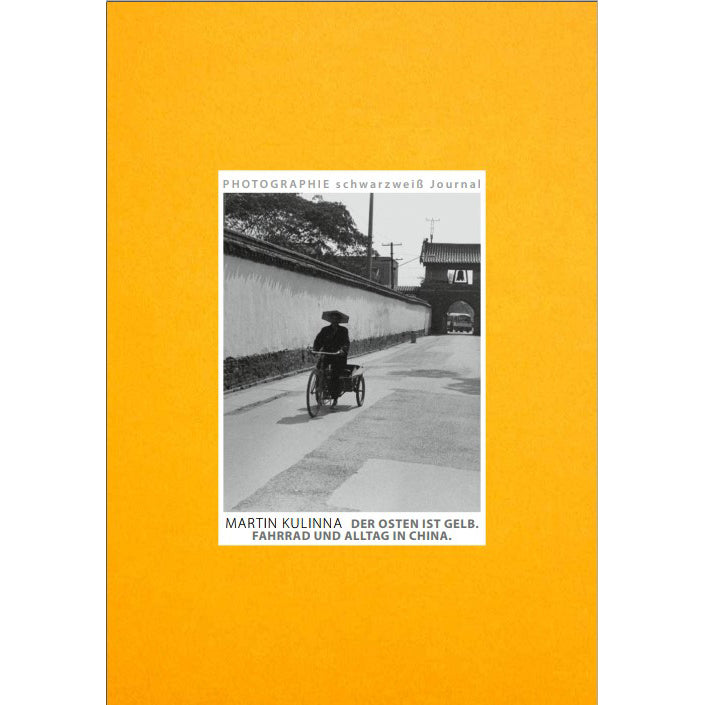
Journals of the FOUNDATION PHOTOGRAPHY black and white
Tax included. Shipping calculated at checkout
Delivery time within Germany: 1 - 3 working days
The STIFTUNG PHOTOGRAPHIE schwarzweiß is committed to the preservation, development, and dissemination of analogue black-and-white photography.
Photography as a visual medium is undergoing a progressive transformation. Photography is gaining increasing importance as the foundation of modern communication, as a medium of documentation, and as an art medium in our visually oriented society.
The danger of losing important testimonies from the more than 150-year history of analogue photography in the transition from analogue to digital photography is the impetus for the Foundation to explore and preserve estates and archives.
Furthermore, knowledge of processing, presentation and archiving of analogue black and white materials is imparted.
In commemoration of the "Edition Photothek," the PHOTOGRAPHIE black-and-white Journal series is published in booklet format, featuring exclusively analog black-and-white photographs. Each journal explores a theme or presents the work of a photographer. Great emphasis is placed on design, materials used, and printing (duplex printing). This keeps analog photography in the present.
Issue dimensions: 16.5 x 23 cm (further information can be found under the respective issue tab)
Journal No. 1
Christian Klant – Wet Plate Portraits
Pausing – in two respects, this is what Christian Klant's portraits, created using the wet plate (analog photography) technique, from Berlin, offer. Firstly, the process requires concentration and stillness from both the people portrayed and the photographer (the process requires long exposure times). Secondly, the viewer of the photographs can pause and embark on a personal journey of discovery.
Author: Text by André Meier
Number of pages: 32 pages, 16.5 x 23 cm, 27 illustrations in duplex printing
Limited edition: 300 copies
Published: 2015
Publisher: Stiftung Photographie schwarzweiß, Ed. Martin Kulinna
Type: Softcover
Language: English / German

Journal No. 2
Pictures of an Institution/Ueckermünde
On October 1, 1875, the Ueckermünde Provincial Mental Hospital opened. Historical photographs from the 1890s to the 1880s illustrate the institution's history. The changes during this period in the attitudes of doctors, nurses, and assistants in front of the camera, as well as those of the photographer, are clearly evident in the photographs.
Authors: Text by André Meier
Number of pages: 32 pages, 16.5 x 23 cm, 27 illustrations in duplex printing
Limited edition: 400 copies
Published: 2015
Publisher: Stiftung Photographie schwarzweiß, Ed. Martin Kulinna

Journal No. 3
Angela Fensch – Portraits
Journal No. 3 presents classic portraits of young people in 2016 and doctors in 1992. “Their models not only present themselves in front of the lens in their familiar surroundings or a location of their own choosing, they also decide how they want to be portrayed.”
Authors: Text by Thomas Knauf
Number of pages: 32 pages, 16.5 x 23 cm, 27 illustrations in duplex printing
Limited edition: 250 copies
Published: 11.12.2017

Journal No. 4
Martin Weinhold – In Canadian Workspaces
This ten-year, long-term project is a rare work of contemporary photography and unique in Canada. It began in April 2006. Weinhold himself explains it as follows: "Work is the foundation of Canadian society, yet there is no real model for its representation. Unlike in Europe, a now established continent, in Canada there is a relationship between person and space... The people I capture in my images must navigate two dramatic conflicts: They are exposed in space and time and simultaneously forced to earn a living."
Authors: Text by Don Snyder
Number of pages: 32 pages, 16.5 x 23 cm, 27 illustrations in duplex printing
Limited edition: 250 copies
Published: 2017

Journal No. 5
Jana Dillo – Rob R. de Jong
Rob de Jong's photographs are exposed and developed on old glass plates from the 1930s. Here, the plant seems to be both a subject of research and a symbol of transience. Torn from their natural environment and placed, root and all, in glass laboratory vessels, the days of daisies and chamomile are numbered.
In Jana Dillo's photographs, greenhouses appear more like prisons, against whose glass walls plants, starving for air and light, press themselves desperately and in vain. These are melancholic images that can certainly symbolize our still-ambivalent relationship with nature.
Authors: Text by André Meier
Number of pages: 32 pages, 16.5 x 23 cm, 27 illustrations in duplex printing
Limited edition: 250 copies
Published: 2018

Journal No. 6
Hans-Joachim Schubert – Collages
On October 1, 1875, the Ueckermünde Provincial Mental Hospital opened. Historical photographs from the 1890s to the 1880s illustrate the institution's history. The changes during this period in the attitudes of doctors, nurses, and assistants in front of the camera, as well as those of the photographer, are clearly evident in the photographs.
Authors: Text by André Meier
Number of pages: 32 pages, 16.5 x 23 cm, 27 illustrations in duplex printing
Limited edition: 200 copies
Published: 2019

Journal No. 7
Roland Köhler – Uckermark
For city dwellers eager to migrate, the Uckermark region is a kind of longing for authenticity, a projection surface with a touch of promise for freedom and self-determination. Many succumb to the magic of this blend.
Roland Köhler, too. In 1998, he moved, almost by forced coincidence, from Berlin to a village that would soon consist entirely of (former) Berliners. After turmoil, a period of upheaval, and life in a rapidly changing society, his photographic gaze also calmed down in the solitude and vastness of the Uckermark.
His images melt this mythical, glacially shaped ground and terminal moraine landscape into graphic surfaces and contrasting perspectives. Into archaic compositions of a borderland since time immemorial. We see quiet, sublime places. Image diagonals that explore the horizon like home.
Text by: Raimar Fritsch
Number of pages: 32 pages, 16.5 x 23 cm, 25 illustrations in duplex printing
Limited edition: 260 copies
Published: 2020

Journal No. 8
Barbara Wolff – Amazonia
Belém, the city in the south of the Amazon Delta, is no paradise. Located below the equator, it receives twice as much rain as the banks of the Spree River. Whether it's January or July, the thermometer climbs above 30 degrees Celsius almost every day, and even the nights bring little relief. All around, a perpetually green world, where the most bizarre animals wriggle around the most bizarre plants. This is the backdrop in which photographer Barbara Wolff found her striking subjects: people who don't resist this melancholic aura, but are part of it. Barbara Wolff's pictures suggest that the warm, humid and history-rich genius loci has taught Belém's inhabitants for generations that any attempt to separate one from the other is doomed to failure. An air of apathy hovers over the black-and-white scenes, but one that could just as easily be described as enviable equanimity.
Text by: Andre Meier
Number of pages: 32 pages, 16.5 x 23 cm portrait format, 27 illustrations in duplex print
Limited edition: 300 copies
Published: 2020

Journal No. 9
Jaroslav Šklíba – On the move
The photographs by Jaroslav Šklíba (1905-1994) are unsettling. We see liberated Czech prisoners from the Sachsenhausen and Ravensbrück concentration camps traversing Mecklenburg in the spring of 1945. In small groups, men and women roam through the forests and villages of defeated Germany. The mood seems relaxed. They camp out in the open, take a dip in the lake, requisition a cow here, a team of horses there, and make sure they can begin the next stage with full stomachs. A sewn-on prisoner number, a triangle, or fragments of prison clothing are a rather casual reminder of the hell this motley crew escaped just a few days earlier.
Text by: Andre Meier
Number of pages: 32 pages, 16.5 x 23 cm landscape format
Limited edition: 250 copies
Published: 2022

Journal No. 10
Martin Kulinna – The East is Yellow
The Chinese believe that their civilization was formed from the loess, the fertile soil of the Yellow River (Huanghe). Their first legendary emperor, Huang Di, the Yellow Emperor, was named after this material: yellow earth = emperor. Yellow is the color of authority, power, and self-determination. The East is yellow. The bicycle came to China through Western colonialism. As a multifunctional object and as a metaphor, it stood for decades of experimental, innovative ways of coping with everyday life in modern, pre-digital China. Those days are over.
In 1996, Antje Budde and I traveled through China with Martin Kulinna and Heike Sommer for several weeks. We asked ourselves: Why is the German media's image of China so different from our own observations? How can we contribute to respectful, intercultural understanding at the everyday level? Our focus was the art of everyday life. This is where human creativity is at its most existential and original. The circle closed with the most used and functional everyday object: the bicycle.
Format: 16.5 x 24 cm portrait format
Number of pages: 29 illustrations in 4/4 on 36 pages
Cover : Softcover.
Language: German/ English
Published: 2024
Publisher: Stiftung Photographie schwarzweiß, Ed. Martin Kulinna

Information on product safety
Martin Kulinna
Lindenstr. 6 b
kontakt@stiftung-photographie.de

Choose options











Tax included. Shipping calculated at checkout
The STIFTUNG PHOTOGRAPHIE schwarzweiß is committed to the preservation, development, and dissemination of analogue black-and-white photography.
Photography as a visual medium is undergoing a progressive transformation. Photography is gaining increasing importance as the foundation of modern communication, as a medium of documentation, and as an art medium in our visually oriented society.
The danger of losing important testimonies from the more than 150-year history of analogue photography in the transition from analogue to digital photography is the impetus for the Foundation to explore and preserve estates and archives.
Furthermore, knowledge of processing, presentation and archiving of analogue black and white materials is imparted.
In commemoration of the "Edition Photothek," the PHOTOGRAPHIE black-and-white Journal series is published in booklet format, featuring exclusively analog black-and-white photographs. Each journal explores a theme or presents the work of a photographer. Great emphasis is placed on design, materials used, and printing (duplex printing). This keeps analog photography in the present.
Issue dimensions: 16.5 x 23 cm (further information can be found under the respective issue tab)
Journal No. 1
Christian Klant – Wet Plate Portraits
Pausing – in two respects, this is what Christian Klant's portraits, created using the wet plate (analog photography) technique, from Berlin, offer. Firstly, the process requires concentration and stillness from both the people portrayed and the photographer (the process requires long exposure times). Secondly, the viewer of the photographs can pause and embark on a personal journey of discovery.
Author: Text by André Meier
Number of pages: 32 pages, 16.5 x 23 cm, 27 illustrations in duplex printing
Limited edition: 300 copies
Published: 2015
Publisher: Stiftung Photographie schwarzweiß, Ed. Martin Kulinna
Type: Softcover
Language: English / German

Journal No. 2
Pictures of an Institution/Ueckermünde
On October 1, 1875, the Ueckermünde Provincial Mental Hospital opened. Historical photographs from the 1890s to the 1880s illustrate the institution's history. The changes during this period in the attitudes of doctors, nurses, and assistants in front of the camera, as well as those of the photographer, are clearly evident in the photographs.
Authors: Text by André Meier
Number of pages: 32 pages, 16.5 x 23 cm, 27 illustrations in duplex printing
Limited edition: 400 copies
Published: 2015
Publisher: Stiftung Photographie schwarzweiß, Ed. Martin Kulinna

Journal No. 3
Angela Fensch – Portraits
Journal No. 3 presents classic portraits of young people in 2016 and doctors in 1992. “Their models not only present themselves in front of the lens in their familiar surroundings or a location of their own choosing, they also decide how they want to be portrayed.”
Authors: Text by Thomas Knauf
Number of pages: 32 pages, 16.5 x 23 cm, 27 illustrations in duplex printing
Limited edition: 250 copies
Published: 11.12.2017

Journal No. 4
Martin Weinhold – In Canadian Workspaces
This ten-year, long-term project is a rare work of contemporary photography and unique in Canada. It began in April 2006. Weinhold himself explains it as follows: "Work is the foundation of Canadian society, yet there is no real model for its representation. Unlike in Europe, a now established continent, in Canada there is a relationship between person and space... The people I capture in my images must navigate two dramatic conflicts: They are exposed in space and time and simultaneously forced to earn a living."
Authors: Text by Don Snyder
Number of pages: 32 pages, 16.5 x 23 cm, 27 illustrations in duplex printing
Limited edition: 250 copies
Published: 2017

Journal No. 5
Jana Dillo – Rob R. de Jong
Rob de Jong's photographs are exposed and developed on old glass plates from the 1930s. Here, the plant seems to be both a subject of research and a symbol of transience. Torn from their natural environment and placed, root and all, in glass laboratory vessels, the days of daisies and chamomile are numbered.
In Jana Dillo's photographs, greenhouses appear more like prisons, against whose glass walls plants, starving for air and light, press themselves desperately and in vain. These are melancholic images that can certainly symbolize our still-ambivalent relationship with nature.
Authors: Text by André Meier
Number of pages: 32 pages, 16.5 x 23 cm, 27 illustrations in duplex printing
Limited edition: 250 copies
Published: 2018

Journal No. 6
Hans-Joachim Schubert – Collages
On October 1, 1875, the Ueckermünde Provincial Mental Hospital opened. Historical photographs from the 1890s to the 1880s illustrate the institution's history. The changes during this period in the attitudes of doctors, nurses, and assistants in front of the camera, as well as those of the photographer, are clearly evident in the photographs.
Authors: Text by André Meier
Number of pages: 32 pages, 16.5 x 23 cm, 27 illustrations in duplex printing
Limited edition: 200 copies
Published: 2019

Journal No. 7
Roland Köhler – Uckermark
For city dwellers eager to migrate, the Uckermark region is a kind of longing for authenticity, a projection surface with a touch of promise for freedom and self-determination. Many succumb to the magic of this blend.
Roland Köhler, too. In 1998, he moved, almost by forced coincidence, from Berlin to a village that would soon consist entirely of (former) Berliners. After turmoil, a period of upheaval, and life in a rapidly changing society, his photographic gaze also calmed down in the solitude and vastness of the Uckermark.
His images melt this mythical, glacially shaped ground and terminal moraine landscape into graphic surfaces and contrasting perspectives. Into archaic compositions of a borderland since time immemorial. We see quiet, sublime places. Image diagonals that explore the horizon like home.
Text by: Raimar Fritsch
Number of pages: 32 pages, 16.5 x 23 cm, 25 illustrations in duplex printing
Limited edition: 260 copies
Published: 2020

Journal No. 8
Barbara Wolff – Amazonia
Belém, the city in the south of the Amazon Delta, is no paradise. Located below the equator, it receives twice as much rain as the banks of the Spree River. Whether it's January or July, the thermometer climbs above 30 degrees Celsius almost every day, and even the nights bring little relief. All around, a perpetually green world, where the most bizarre animals wriggle around the most bizarre plants. This is the backdrop in which photographer Barbara Wolff found her striking subjects: people who don't resist this melancholic aura, but are part of it. Barbara Wolff's pictures suggest that the warm, humid and history-rich genius loci has taught Belém's inhabitants for generations that any attempt to separate one from the other is doomed to failure. An air of apathy hovers over the black-and-white scenes, but one that could just as easily be described as enviable equanimity.
Text by: Andre Meier
Number of pages: 32 pages, 16.5 x 23 cm portrait format, 27 illustrations in duplex print
Limited edition: 300 copies
Published: 2020

Journal No. 9
Jaroslav Šklíba – On the move
The photographs by Jaroslav Šklíba (1905-1994) are unsettling. We see liberated Czech prisoners from the Sachsenhausen and Ravensbrück concentration camps traversing Mecklenburg in the spring of 1945. In small groups, men and women roam through the forests and villages of defeated Germany. The mood seems relaxed. They camp out in the open, take a dip in the lake, requisition a cow here, a team of horses there, and make sure they can begin the next stage with full stomachs. A sewn-on prisoner number, a triangle, or fragments of prison clothing are a rather casual reminder of the hell this motley crew escaped just a few days earlier.
Text by: Andre Meier
Number of pages: 32 pages, 16.5 x 23 cm landscape format
Limited edition: 250 copies
Published: 2022

Journal No. 10
Martin Kulinna – The East is Yellow
The Chinese believe that their civilization was formed from the loess, the fertile soil of the Yellow River (Huanghe). Their first legendary emperor, Huang Di, the Yellow Emperor, was named after this material: yellow earth = emperor. Yellow is the color of authority, power, and self-determination. The East is yellow. The bicycle came to China through Western colonialism. As a multifunctional object and as a metaphor, it stood for decades of experimental, innovative ways of coping with everyday life in modern, pre-digital China. Those days are over.
In 1996, Antje Budde and I traveled through China with Martin Kulinna and Heike Sommer for several weeks. We asked ourselves: Why is the German media's image of China so different from our own observations? How can we contribute to respectful, intercultural understanding at the everyday level? Our focus was the art of everyday life. This is where human creativity is at its most existential and original. The circle closed with the most used and functional everyday object: the bicycle.
Format: 16.5 x 24 cm portrait format
Number of pages: 29 illustrations in 4/4 on 36 pages
Cover : Softcover.
Language: German/ English
Published: 2024
Publisher: Stiftung Photographie schwarzweiß, Ed. Martin Kulinna

Information on product safety
Martin Kulinna
Lindenstr. 6 b
kontakt@stiftung-photographie.de
If you have any questions or concerns, please do not hesitate to contact us.
Best shipping
We ship your goods as quickly and safely as possible.
We process your payment information and other data securely.
